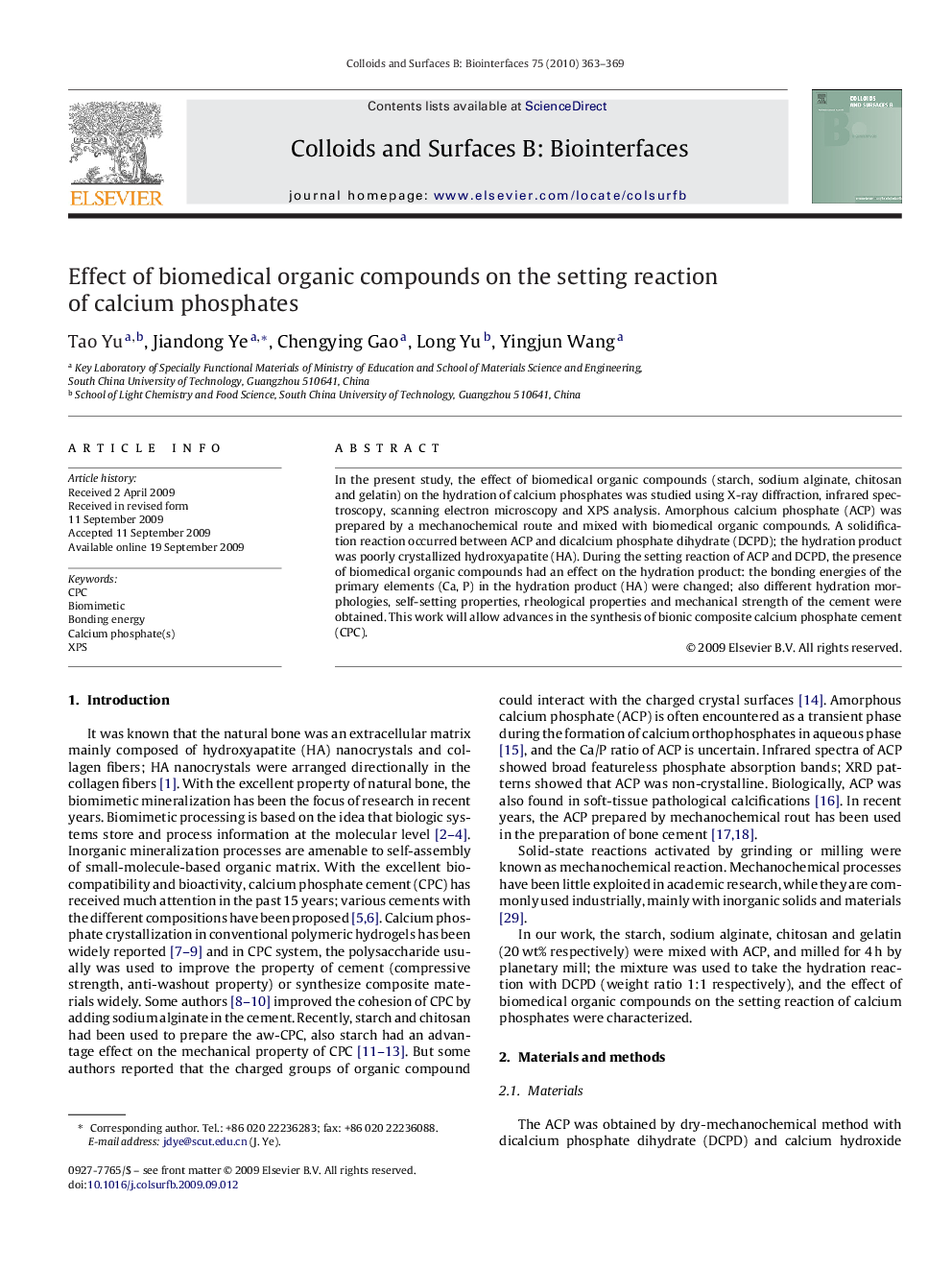| Article ID | Journal | Published Year | Pages | File Type |
|---|---|---|---|---|
| 601981 | Colloids and Surfaces B: Biointerfaces | 2010 | 7 Pages |
Abstract
In the present study, the effect of biomedical organic compounds (starch, sodium alginate, chitosan and gelatin) on the hydration of calcium phosphates was studied using X-ray diffraction, infrared spectroscopy, scanning electron microscopy and XPS analysis. Amorphous calcium phosphate (ACP) was prepared by a mechanochemical route and mixed with biomedical organic compounds. A solidification reaction occurred between ACP and dicalcium phosphate dihydrate (DCPD); the hydration product was poorly crystallized hydroxyapatite (HA). During the setting reaction of ACP and DCPD, the presence of biomedical organic compounds had an effect on the hydration product: the bonding energies of the primary elements (Ca, P) in the hydration product (HA) were changed; also different hydration morphologies, self-setting properties, rheological properties and mechanical strength of the cement were obtained. This work will allow advances in the synthesis of bionic composite calcium phosphate cement (CPC).
Keywords
Related Topics
Physical Sciences and Engineering
Chemical Engineering
Colloid and Surface Chemistry
Authors
Tao Yu, Jiandong Ye, Chengying Gao, Long Yu, Yingjun Wang,
